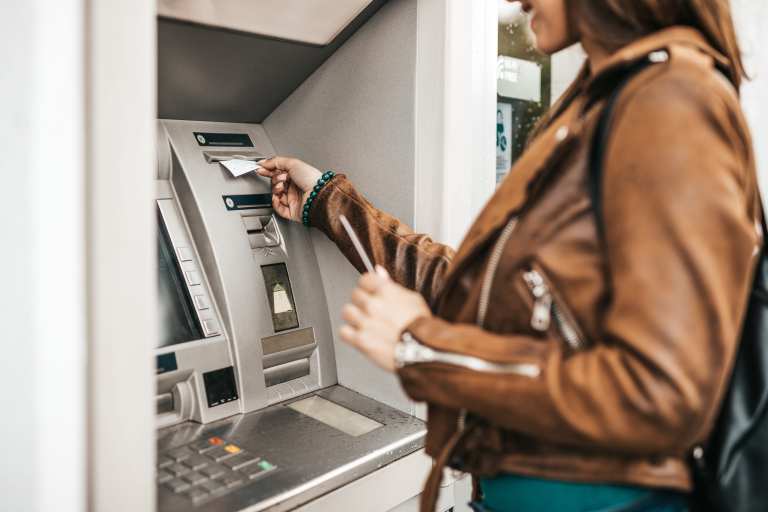
Brick-and-mortar financial institutions (FIs) compete with digital-only competitors that often take advantage of lower — or nonexistent — physical buildout costs. The former are thus being forced to prove that on-the-ground presences offer added value to consumers, and new technological implementations are helping them create swifter, more comprehensive services through customer-facing staples.
ATMs are standard in most FIs’ operations. They allow consumers to skip lines at branches, quickly make deposits and complete other basic services, and they enable those with debit cards to grab cash when branches may not be available. FIs that seek to appeal to on-the-go users are now giving these machines upgrades, offering everything from check cashing and enhanced account generation to improved consumer banking processes.
The following Deep Dive examines how next-gen ATMs are boosting customers’ experiences and helping brick-and-mortar FIs remain current.
ATMs Get Smarter — And More Talented
ATMs are offering more functionality in addition to standard services, with some enabling users to pay bills, purchase movie tickets and transfer funds in bitcoin or fiat currencies. The machines are also being untethered from plastic cards, permitting consumers to engage with them via codes, contactless wearables or mobile devices. Chase Bank, Fifth Third Bank, PNC Bank and 3,500 credit unions rolled out card-free ATMs last year, and such services could create faster, more convenient experiences for consumers who forget their wallets or do not feel like scouring them for their debit cards. A recent study found 78 percent of consumers would prefer to use cardless ATMs over carrying cards.
FIs are also looking to win customers over with new ATM interfaces that connect to live tellers via webcam. Such options allow bank customers to access services that would otherwise require visits to physical branches, such as completing loan applications, opening accounts and requesting money orders. Customers are not the only ones benefiting from video ATM advances, either: The FIs managing these machines can use the upgrades to improve their bottom lines and smooth their operations. Video conferencing with tellers enables banks to upsell by marketing services to customers who might avoid going into branches and thus may be more difficult to reach with messaging, for example.
ATM security is getting its own boost as smart technology rolls out. Artificial intelligence (AI) tools can recognize usage patterns to better predict how much cash to stock as well as assist with predictive maintenance efforts. Out-of-order ATMs can be extreme inconveniences for bank customers located far from physical branches, and they can be cumbersome for banks to repair. AI-driven technologies can anticipate breakdowns before they occur, however, which would allow banks to more efficiently deploy repair staff to keep the machines functioning well and stocked with needed supplies.
Upgrading security
ATMs are vulnerable to fraud, however, and FIs must combat both old and new attacks to keep customers secure. A recent study found 86 percent of ATM operators experienced fraud within the past year, and 59 percent believed fraud attacks had increased during the same period.
Card skimmers are a particularly prevalent menace for ATMs. Scammers purchase card skimming devices on dark web marketplaces and hide them over or inside card insert slots, disguising them as part of the machines. The skimmers then copy magstripe cards’ details, allowing the criminals to create counterfeit cards they can sell or use to make purchases or withdraw victims’ funds.
ATM updates that let users access their accounts without inserting cards can reduce these problems, however. Some machines even enable consumers to log into mobile banking apps to enter their cash withdrawal requests. Account holders then arrive at ATMs, select “cardless cash” options and receive QR codes they can scan into their banking apps, allowing them to confirm their identities and access funds. Other machines require account holders to use their banking apps to select withdrawal amounts, then send codes via app that consumers can enter into ATMs to receive their funds.
FIs must also block thieves from using stolen devices and credentials to access funds. Biometric authentication that uses facial recognition or finger vein and palm scanners can provide powerful defenses, ensuring funds can be withdrawn only by specific, authorized and authenticated account holders.
The machines must be safeguarded against internet-based attacks as well. One hacker group stole more than €1 billion ($1.11 billion) from FIs via ATM transactions in more than 40 countries between 2013 and 2016. FIs combatting such attacks must have robust cybersecurity efforts in place, including regular scans to detect remote network protocols and encrypted traffic. AI and machine learning (ML) tools can help, recognizing patterns in legitimate transactions and identifying irregularities that could indicate imminent or ongoing cyberattacks.
Cutting-edge technologies are making ATMs safer, smarter and more capable of providing numerous functionalities and services, and these features could be key to helping legacy FIs keep customers loyal. FIs have long relied on ATMs to engage consumers, but infusing the machines with smart features can allow banks and credit unions to further cater to customers’ evolving wants and needs. Blending the convenience of immediate, physical access with swift and secure digital services can only encourage customer retention, after all.